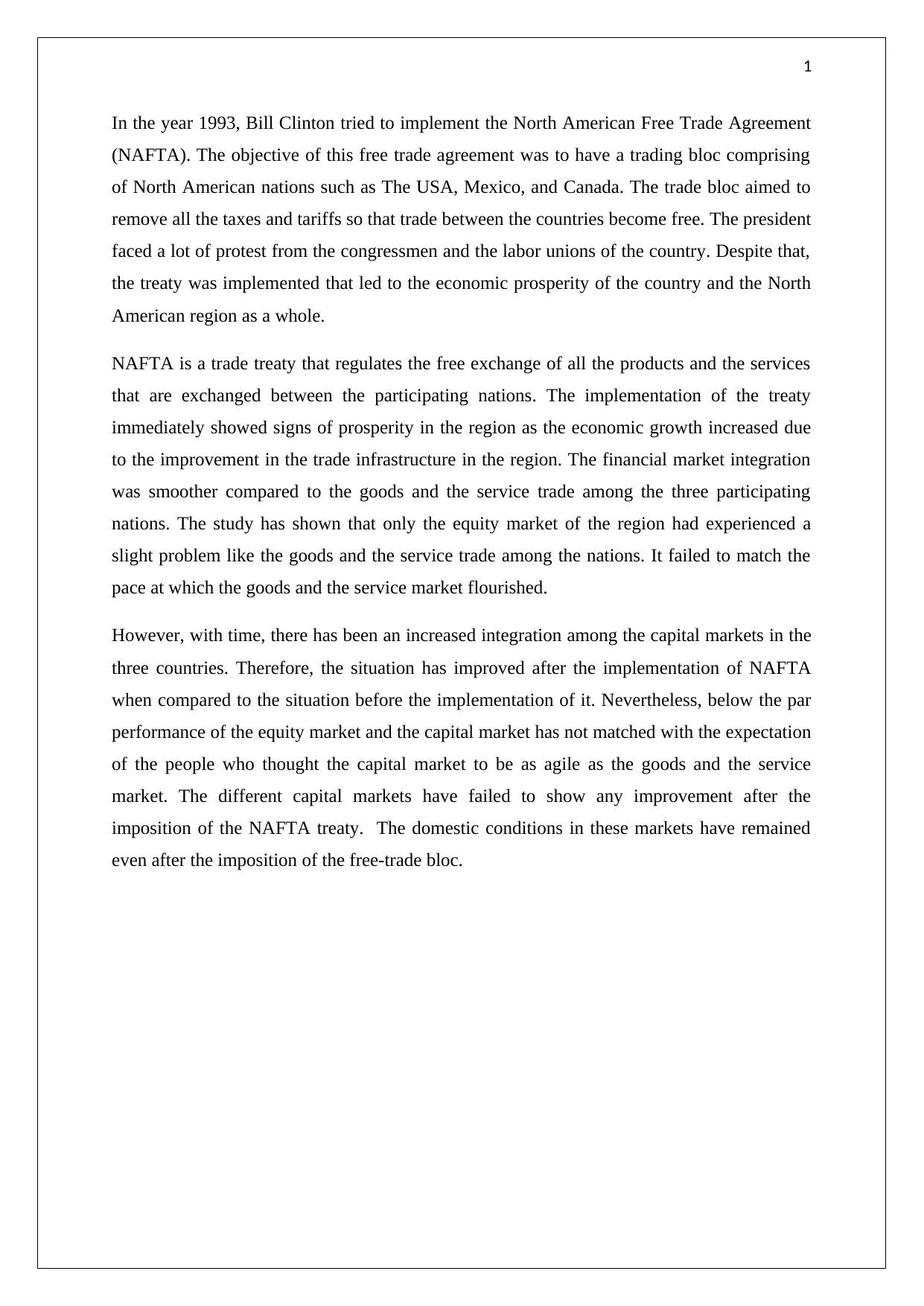NAFTA Treaty: Assessing Economic Outcomes and Financial Integration
VerifiedAdded on 2022/09/06
|1
|348
|13
Essay
AI Summary
This essay examines the implementation of the North American Free Trade Agreement (NAFTA) in 1993 by Bill Clinton, focusing on its aim to establish a free trade bloc between the USA, Mexico, and Canada. The treaty sought to eliminate taxes and tariffs to promote free trade, which faced opposition but ultimately led to economic prosperity in the region. The essay notes that while financial market integration was generally smooth, the equity market's performance lagged behind the goods and services trade. Despite initial underperformance in the capital markets, integration improved over time, although expectations for capital market agility were not fully met. The analysis concludes by highlighting that domestic market conditions remained largely unchanged even after NAFTA's implementation.







![[object Object]](/_next/static/media/star-bottom.7253800d.svg)